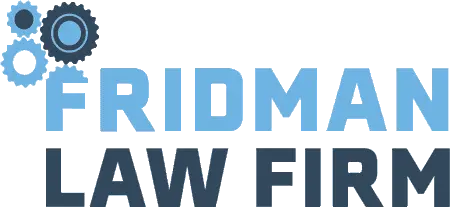Intellectual Property Lawyer

Over the past century or so, the U.S. economy has been shifting from a foundation of industry to one made of information, and intellectual property has been a vital cornerstone in that shift.
According to a recent U.S. Patent and Trademark Office study, industries heavily based on intellectual property, like computer technology and pharmaceuticals, produce nearly $8 trillion in economic value, or 41% of American GDP. As these industries tend to cross state and international borders, intellectual property law is primarily a federal domain and a major ongoing issue for Congress.
At its most basic, intellectual property law is like tangible property law — in that both involve rights related to property ownership. A key distinction is that tangible property involves the exclusive physical possession of an object or section of land, while intellectual property does not focus on physical items.
What Is Intellectual Property?
Intellectual property law has a two-pronged focus. The first is incentivizing creators by ensuring they receive adequate compensation for their work. The second is to incentivize the production of works that ultimately benefit the greater public.
Intellectual property law subjects are often referred to as non-rivalrous public goods or products that can be used concurrently by multiple people without decreasing the supply for others to use. Unregulated use would seriously limit their value because these goods are essentially unlimited in supply. Intellectual property law incentivizes creators in many situations by creating a limited monopoly.
Types of Intellectual Property Law
Intellectual property lawyers mostly focus on the following areas: copyrights, patents, trademarks, and trade secrets.
Copyright
Copyright is an area of intellectual property law that is focused on exclusive legal rights to publish, reproduce, distribute, or sell derivative artistic works based on a copyrighted property. Although the U.S. Copyright Act was initially focused on protecting literary works, the definition of copyright has expanded to include architectural design, graphic arts, motion pictures, software, and audio recordings.
It’s important to note that the protections offered by copyright law are not absolute. The Copyright Act allows for “fair use,” including commenting on a work, news reporting, education, and research. Courts primarily use past legal decisions related to the Copyright Act to determine what qualifies as fair use.
To even qualify for copyright protection, a work must meet the minimum threshold for originality, and the Supreme Court has found that a copywritten work must exhibit “some minimal degree of creativity.” To be deemed protected, a work doesn’t have to be registered with the Copyright Office. But it must be registered before a copyright infringement action can take place.
Patent
While copyright law is focused on literary and artistic works, patents fall under an area of intellectual property law that is concerned with unique inventions. Under the U.S. Patent Act, a patent holder has exclusive rights to an invention that prevents others from creating, using, importing, and selling it.
Essentially, a patent provides a monopoly to a patent holder, but only for a limited time. To receive a patent, an application must include the disclosure of information to be patented. After the patent expires, that information enters the public domain.
To be patented, an invention must meet five primary requirements:
- Patentable subject matter. According to the Patent Act, only processes, machines, material composition, and material improvements may be patented.
- Utility. The subject of the patent must have credible, specific, and substantial utility.
- Novelty. If an invention has been previously patented or described, even in another country, it does not qualify for a patent.
- Nonobviousness. When it comes to material improvement, the patent subject matter must not be obvious or predictable to a person having ordinary skills.
- Enablement. A patent application must describe the specific workings of the invention and provide a precise legal definition.
Patent law is designed to incentivize inventors by ensuring an adequate return on time and material investments. This area of intellectual property law can be controversial, especially in the pharmaceutical industry, where life-saving patented drugs have been astronomically priced.
Trademark
Trademark law is focused on protecting consumers from fraudulent goods and services. It is also designed to encourage producers to invest in the quality of what they provide.
Trademark law has traditionally been an area of intellectual property law covering logos, slogans, and symbols used to identify organizations and any retail goods they might produce. Trademarks have recently included sounds, animations, fragrances, colors, and trade dress. It is now broadly considered anything that can be used to identify an organization and its goods.
A mark or device must be used in commerce to be considered for protection from the U.S. Patent and Trademark Office. This is because trademark law falls under the constitutional ability of Congress to regulate interstate commerce. A mark or device also needs to be distinct and specific to a singular organization or producer.
Trade Secrets
Regulated under the Constitution’s Commerce Clause, trade secrets are of particular interest in start-up law, where the founding of a company is often based on novel formulas, secret recipes, software source code, or production processes.
Broadly speaking, a trade secret is any valuable information that derives additional value from not being publicly known. The holders of trade secrets do not need to formally apply for protection, as there are civil actions that can be taken under state and federal law. However, intellectual property lawyers seeking legal protection of trade secrets must take reasonable steps to avoid disclosure. For example, a recipe posted to social media can no longer be protected as a trade secret.
Legal action should only be pursued when a trade secret is misappropriated. This generally applies to information that is acquired through theft, bribery, or a violation of a non-disclosure agreement. When information is acquired through appropriate means, such as through mergers and acquisitions, it’s not typically considered a violation of trade secrets.
Our Team of Intellectual Property Lawyers Can Help Protect Your Company
The Fridman Law Firm can help your company monetize its innovative ideas and protect its established intellectual property. From corporate law to general counsel, we provide a range of legal services related to intellectual property. Contact us online or call our office in New York City at 212-262-9823 to arrange for a consultation.


